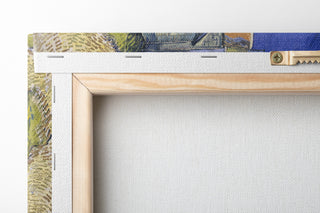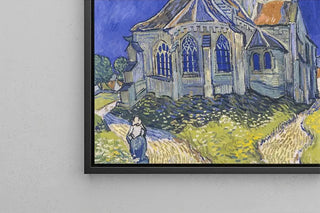Riflemen on the outskirts of towns II - Karel Breydel


Vue de dos

Cadre (en option)
Source:
Battle Recruits on the Outskirts of Towns II
In "Battle Recruits on the Outskirts of Towns II," the artist captures an intense moment of military history. The dark, earthy colors dominate the canvas, evoking an atmosphere of gravity and tension. The figures of the skirmishers, dressed in uniforms, blend into the urban landscape in the background, creating a striking contrast between humanity and architecture. The painting technique, with its dynamic brushstrokes, conveys a sense of movement and urgency, as if one could almost hear the noise of footsteps and exchanges. This artwork invites reflection on the consequences of war and the role of soldiers on the periphery of conflicts.
Skirmishers on the outskirts of towns II: a reflection of modern warfare
The artist behind "Skirmishers on the outskirts of towns II" is part of a tradition of depicting military conflicts, where the importance of war in human history is highlighted. Although little information is available about this artist, his work bears the influence of early 20th-century artistic movements, where war and its consequences were recurring themes. Through powerful and evocative compositions, he seeks to capture the essence of bravery and the sacrifices of soldiers. This painting belongs to a period when art became a means of expressing human emotions in the face of violence and destruction.
A decorative acquisition with multiple assets
The art print of "Battle Recruits on the Outskirts of Towns II" is a captivating decorative piece that will enrich any living space, whether a living room, office, or bedroom. Its reproduction quality guarantees fidelity to the details and colors of the original work, allowing full appreciation of the scene's depth. The aesthetic appeal of this piece lies in its ability to spark conversations and raise awareness of historical and emotional themes. By incorporating this canvas into your decor, you bring not only a touch of elegance but also a reflection on the past and its resonances in the present.

Rendu mat

Vue de dos

Cadre (en option)
Source:
Battle Recruits on the Outskirts of Towns II
In "Battle Recruits on the Outskirts of Towns II," the artist captures an intense moment of military history. The dark, earthy colors dominate the canvas, evoking an atmosphere of gravity and tension. The figures of the skirmishers, dressed in uniforms, blend into the urban landscape in the background, creating a striking contrast between humanity and architecture. The painting technique, with its dynamic brushstrokes, conveys a sense of movement and urgency, as if one could almost hear the noise of footsteps and exchanges. This artwork invites reflection on the consequences of war and the role of soldiers on the periphery of conflicts.
Skirmishers on the outskirts of towns II: a reflection of modern warfare
The artist behind "Skirmishers on the outskirts of towns II" is part of a tradition of depicting military conflicts, where the importance of war in human history is highlighted. Although little information is available about this artist, his work bears the influence of early 20th-century artistic movements, where war and its consequences were recurring themes. Through powerful and evocative compositions, he seeks to capture the essence of bravery and the sacrifices of soldiers. This painting belongs to a period when art became a means of expressing human emotions in the face of violence and destruction.
A decorative acquisition with multiple assets
The art print of "Battle Recruits on the Outskirts of Towns II" is a captivating decorative piece that will enrich any living space, whether a living room, office, or bedroom. Its reproduction quality guarantees fidelity to the details and colors of the original work, allowing full appreciation of the scene's depth. The aesthetic appeal of this piece lies in its ability to spark conversations and raise awareness of historical and emotional themes. By incorporating this canvas into your decor, you bring not only a touch of elegance but also a reflection on the past and its resonances in the present.



